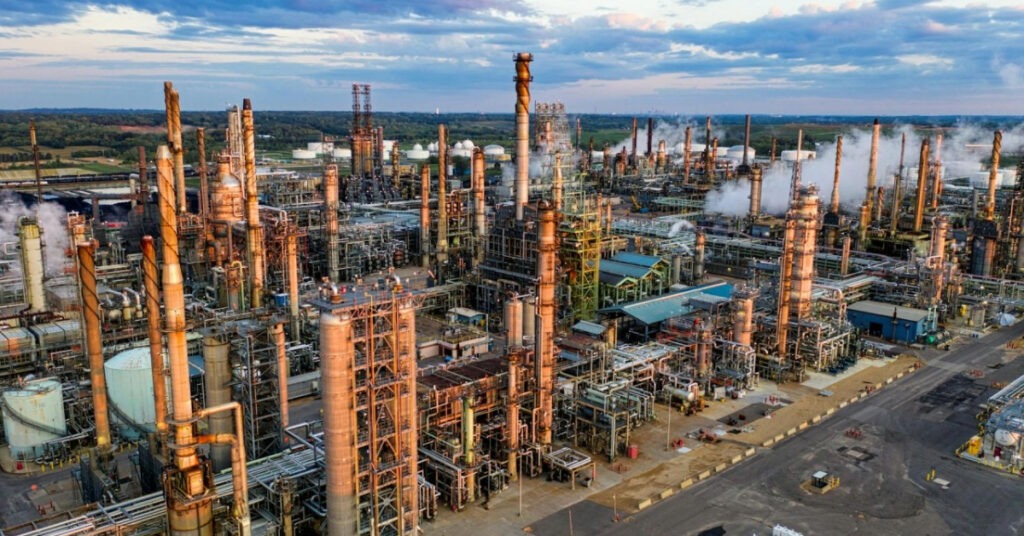As Mexico prepares for the transition of power to its incoming president, Claudia Sheinbaum, a pressing challenge looms on the horizon: the nation’s quest for energy independence may be undermined by a shortfall in domestic crude supply. This challenge arises despite the $17 billion investment by outgoing President Andrés Manuel López Obrador in a new refinery aimed at bolstering the country’s energy self-sufficiency.
Mexico, historically a major crude producer, has witnessed a significant decline in output from its aging oil fields, primarily located in the Gulf of Mexico. This decline has brought production levels to their lowest in over four decades. Without substantial investment in exploration and production, Mexico could find itself in the unprecedented position of importing crude to sustain its refining capacity over the next decade.
For years, Pemex, the state-run oil company, has struggled to meet local fuel demand due to its outdated refineries, which are ill-equipped to process the heavy Maya crude that constitutes the bulk of Mexico’s oil production. This mismatch has forced Mexico to export crude while importing gasoline and diesel, predominantly from the United States. López Obrador has made it a priority to reverse this dependence on imported fuels, which he has viewed as a national humiliation.
In a bid to address this issue, López Obrador commissioned the construction of the Olmeca refinery in Dos Bocas, Tabasco. This 340,000 barrel-per-day (bpd) facility was intended to close the fuel supply gap left by Pemex’s six under-invested refineries. Although the Olmeca refinery is significantly over budget and behind schedule, it is expected to bring Mexico closer to fulfilling its fuel consumption needs once fully operational.
However, recent projections from the energy ministry, which have not been previously reported, indicate that this self-sufficiency may be short-lived. The projections suggest that Pemex will likely need to start importing crude by 2030 as domestic production continues to decline. These findings underscore the urgency of addressing the underlying issues in Mexico’s oil production sector.
Despite the potential boost in production from new fields like Zama, a shallow-water field nearing deepwater classification, and Trion, an ultra-deepwater field, the projections indicate that output will peak at approximately 2.247 million bpd in 2028 before declining rapidly. In the most optimistic scenario, production could reach 2.39 million bpd, while the most pessimistic scenario forecasts a decline to 2.164 million bpd.
The energy ministry’s intermediate scenario, which assumes some new discoveries, projects a rapid decline in output starting in 2030. This decline would necessitate crude imports to maintain refinery operations near full capacity and would halt Mexico’s crude oil exports.
Alma America Porres, a former commissioner of the hydrocarbon regulator, has noted that Mexico’s proven crude reserves suggest that the shortfall could occur even sooner than anticipated. Proven reserves provide the most accurate reflection of available resources, and recent data indicates a decline in Mexico’s proven crude oil reserves from 6.155 billion barrels to 5.978 billion barrels within a year.
The rapid depletion of older fields, such as Cantarell, which was once the world’s second-largest oil field, has outpaced the development of newer fields. Despite López Obrador’s significant investment in Pemex’s refineries, which has increased processing capacity to about 1 million bpd, the refineries are producing record amounts of fuel oil instead of gasoline.
With the Olmeca refinery coming online and older refineries being refurbished, the energy ministry expects to process 1.6 million bpd of crude, which is still below the consumption level of approximately 1.7 million bpd, as reported by the International Energy Agency.
Experts argue that the substantial funds allocated to the Olmeca refinery could have been more effectively spent on oilfield exploration and production or on diversifying into renewable energy sources. López Obrador has not conducted auctions to attract other oil and gas companies to explore and invest in deepwater and onshore shale gas production, areas where Pemex lacks expertise and financial resources.
The existing legal framework permits companies to operate fields independently or in partnership with Pemex. However, the exploration phase requires significant investment, which Pemex is not financially equipped to handle. This has led to calls for increased private sector participation in exploration efforts.
Carla Gabriela González, another former senior official of the hydrocarbon regulator, emphasized the value of private sector investment in exploration, noting that such investments come at no cost to the Mexican state and generate revenue through exploration rights.
Several Pemex engineers and an energy ministry engineer have concurred that the state-owned company would benefit from private sector involvement. A comprehensive exploration strategy, rather than a focus on increasing refining capacities, is deemed essential for Pemex’s long-term viability.
Sheinbaum, positioned as the custodian of her mentor López Obrador’s resource nationalist legacy, faces a dilemma. While she has proposed increased investment in wind and solar infrastructure for electricity generation, her plans for Pemex remain unclear. Her team has not provided further comments on how they intend to navigate the challenges facing Mexico’s oil industry.
